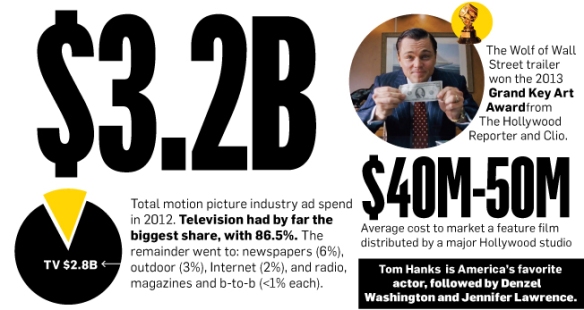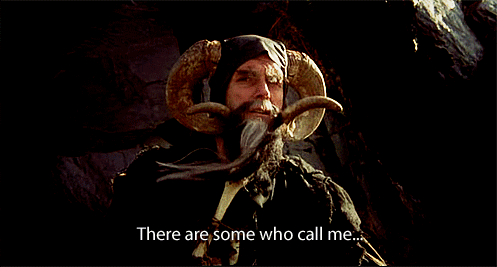Some great stuff in today’s PNConnect Weekly Reading. I highly encourage checking it out.
Monthly Archives: February 2014
First Rule: Do No Harm in your social media marketing
First we had Real Time Marketing. Now, according to David Griner at Adweek, we’ve got what I’ll call “Faux Time Marketing.” You know what we’re talking about, those times when a brand appears to be drunk, or texting with mittens on, or when they share a fake image on Twitter just to get a reaction out of people, knowing full well that it’s not real.
Griner’s point/question – and it’s a good one – is that brands who may be aiming to be overly clever but are sacrificing some level of trust in the quest for Mashable headlines or other attention. He points out that while the controversial tweets got lots of attention, the follow-ups that clarified what exactly the brand was going for received far less, meaning some percentage of people really think Barbie was going to be on the Sports Illustrated Swimsuit Issue cover, or that JCPenney was drunk during the Super Bowl, not just having a laugh.
The important thing, something that I always try to keep in mind, is the old reliable “Do no harm” motto. While I’m always a big fan of comedy that makes the teller giggle (MST3K, Letterman etc) the reality here is that we’re not in a comedy format. Sure, we as brand marketers and social media strategists can be funny in the copy we write. But there is a limit to how far that can go before, yes, it begins to impact the trust the audience places in us. That’s especially true if the brand itself doesn’t have a reputation for being super funny or playful as it can come off as inconsistent and therefore jarring for the audience.
The state of movie marketing
Adweek’s Gabriel Beltrone has an interesting story about how much the big studios spend on marketing their movies in a given year and more, including the size of their social network audience.
If I were going to quibble with anything in the report, it’s that the “Social Scorecard” section seems to just focus on the brand pages and profiles and not the accounts created for individual movies. Those are important numbers to include since otherwise it looks like they’re messaging to a relatively small group of people.
Twitter updates coming to theater pre-shows
Trending and interesting entertainment content from Twitter and Vine are about to start showing up on movie theater screens thanks to a deal between Twitter and National CineMedia, according to Variety.
The deal will add a segment to NCM’s “First Look” pre-movie programming that will include curated material from Twitter and Vine, the latter being owned by the former.
While I have issues with the NCM side of this – I don’t know why mainstream media outlets like this, MSNBC or others think pulling in social media will somehow help them be more relevant – it makes a ton of sense for Twitter. For that company this marks a big stake in the ground in the fight against Facebook (and so some extent Tumblr) as they battle for supremacy in the media conversation circle. Each one wants to be *the* place people talk about movies, TV shows and more. If Twitter can get the content people are publishing there in front of a big audience it goes along way toward that goal, as well as the more fundamental “What is Twitter?” issue that has hampered mainstream adoption.
Facebook not getting the movie advertising love
According to a recent Adweek story, Facebook is having trouble attracting big ad dollars from the Hollywood studios. The lack of buy-in seems to be due to a mix of not feeling the desired demographic is actually on Facebook, that there’s little to no story to tell there through ads and more.
It’s an interesting shift, particularly when you get to the part of the story about how studios are doing more with Tumblr, which *does* seem to match their demographic targeting needs better. I’ve been watching movie marketing long enough that this, if substantial and widespread, would represent a third great shift in social network marketing, from MySpace to Facebook and now to Tumblr, with Twitter acting as the connective tissue between lots of that.
Of note is one agency executive who calls Facebook out for not being visual enough to appeal to younger users. Making Facebook into more of a visual experience has been the guiding principle behind many of the network’s recent acquisitions and changes for precisely this reason, to attract more young users and provide a more appealing playground for brands – and their advertisements – to be in. Which is why there’s such eagerness for the auto-play video ads Facebook has reportedly been testing.
It should be clear that this is just about advertising on Facebook. There doesn’t seem to be any move away from movies having a presence on the social network, promoting the film through various updates and so on.
Hawkeye FTW
I love this recap/revisiting of Hawkeye’s 1983 solo mini-series. Hawkeye was my guy back when I was seriously collecting comics and I’d search bask issue bins for anything featuring Clint on the cover or which I knew he was part of. So it’s a lot of fun taking a look back at this series, which led directly into his starring turn in the brand new West Coast Avengers.
Take a minute before jumping into WhatsApp
New from me on the PNConnect Blog is this piece about how brand publishers face some serious obstacles when it comes to getting involved in WhatsApp or other messaging tools. Those obstacles include scale, reach and some pretty core functionality issues. So the recommendation here is to sit tight since there’s likely more harm than good to be done by jumping in willy-nilly at this point.
Your honor, Your Honor
I don’t generally get that upset about the passing of a celebrity. I may have enjoyed his or her music, movies or whatever, but people pass away every day and it feels…disingenuous to become distraught over the death of someone I never knew in person.
But I was extremely bummed to hear of the passing of the great Harold Ramis. The tributes being sung to the actor/writer/director are numerous and well-earned, with many people (rightly) pointing out that he did as much as anyone to influence the course of the current comedic world, first with his brilliant work on SCTV and then in the movies he wrote, directed and starred in through the 80s, 90s and 00s.
Here’s why this one is hitting me harder than other celebrity passings: Looking at his filmography, his early films wound up making up a ridiculously high percentage of my junior high and high school conversation. Instead of responding to someone with a thought of my own I’d do so with a Ghostbusters quote. Or I’d greet a friend in the hallway with a Caddyshack line. Back to School was a staple of my buddies and I getting together and Club Paradise was a staple of summer afternoon cable TV watching. And while it wasn’t the first Griswold movie I saw, i immediately recognized the original Vacation as being the superior product.
What I took away from Ramis’ movies was the importance of timing. As much as any Marx Bros or Jack Benny routine, if you watch Ramis’ movies or listen to the words in his screenplays you always get the sense that he’s said these words out loud to himself in order to make sure they flow right. That the timing has been worked out. That, just like a singer knowing where the musical phrase should be to, he knows what the crescendo of the scene should be.
Anyone who values the power of words is mourning Ramis today. By all accounts he was an extremely nice and friendly guy (not surprising given his working class Chicago upbringing), without which all that talent means little.




